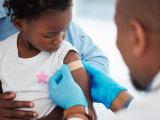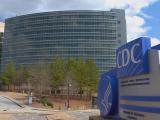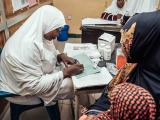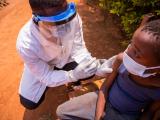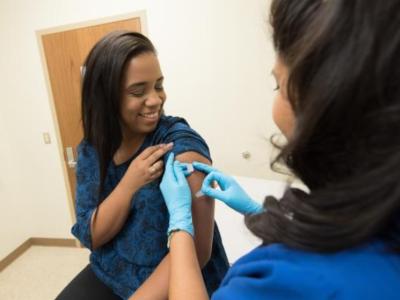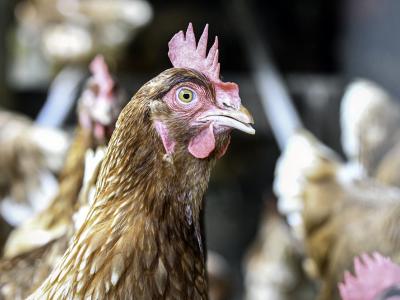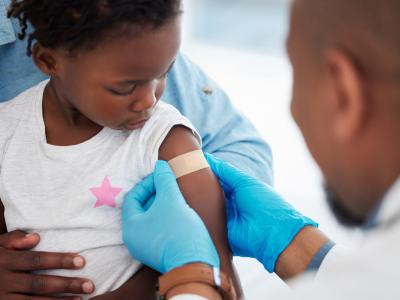Jun 11, 2009 (CIDRAP News) – After delaying action for weeks as the novel H1N1 influenza virus took hold in far-flung parts of the globe, the World Health Organization (WHO) today declared a full-fledged pandemic, formally recognizing that the virus is becoming a global contagion.
WHO Director-General Dr. Margaret Chan announced the long-expected move to pandemic alert phase 6, meaning that the virus has caused sustained community outbreaks in more than one global region. The move comes amid growing signs of community transmission in Australia, Chile, and the United Kingdom—far from the epidemic's birthplace in Mexico and the United States.
"The scientific criteria for a pandemic have been met," Chan said at a press conference. "I have therefore decided to raise the level of influenza pandemic alert from phase 5 to phase 6. The world is now at the start of the 2009 influenza pandemic."
The announcement came as the WHO's global H1N1 count rose to 28,774 confirmed cases in 74 countries. The United States, Mexico, and Canada account for the vast majority of those, but cases have been mounting in Australia (with 1,307), Chile (1,694), and the United Kingdom (822), among others.
"Spread in several countries can no longer be traced to clearly defined chains of human-to-human transmission," Chan said. "Further spread is considered inevitable."
She said there was unanimous agreement among WHO member countries and the agency's emergency committee that "we have indisputable evidence that we are at the beginning of a pandemic caused by a new H1N1 virus."
In making the announcement to a world conditioned by the H5N1 avian influenza virus to think that a pandemic means the global spread of an often-lethal virus, Chan explained that the virus causes mild illness in the vast majority of patients. But she also noted that it differs from seasonal flu in significant ways.
In areas with large outbreaks, most cases have occurred in people younger than 25, and in some of these areas, about 2% of cases have been severe, Chan said. She added that most of the severe and fatal infections have involved people between 30 and 50, and about a third to half of those people were previously healthy.
"Although the pandemic appears to have moderate severity in comparatively well-off countries, it is prudent to anticipate a bleaker picture as the virus spreads to areas with limited resources, poor health care, and a high prevalence of underlying medical problems," Chan stated.
Seven weeks since emergence
The pandemic declaration comes a little more than 7 weeks after the novel virus first reached public attention with a report of US cases on Apr 21 and 44 days after the WHO moved from pandemic alert phase 4 to phase 5 on Apr 29. That signaled that the virus was spreading in more than one country in one WHO region.
The pandemic is the first since the worldwide spread of an H3N2 flu virus in 1968-69, when the tools for tracking and identifying influenza viruses were far less sophisticated than today. Yet the H1N1 virus surprised the world by emerging in North America instead of Asia and causing mild illness in most people, instead of the severe disease associated with the H5N1 virus. But experts warn that it could evolve into a more threatening form.
The WHO had hesitated to move to phase 6 out of concern that it would cause undue alarm and lead to unnecessary and harmful measures such as trade embargoes, travel restrictions, and a flood of worried but healthy people into hospitals. Last week the agency promised to couple its pandemic announcement with an assessment of the severity of the threat in an effort to prevent overreactions.
In her prepared statement today, Chan repeated the WHO's recommendations against travel restrictions and border closures. In a question period afterward, she seemed to downplay the concern that the pandemic declaration would lead to new travel and trade restrictions.
Noting that some countries did impose various restrictions in the early weeks of the epidemic, she said they have been lifting them since then. "We must recognize that with a new disease . . . it's not unusual to have a degree of overreaction. I think this is understandable," she said.
The meaning of 'moderate'
In assessing the pandemic as "moderate" in severity, the WHO did not offer a formal definition of the term or present a severity scale, something that had been talked about earlier.
When reporters asked what "moderate" meant, Dr. Keiji Fukuda, the WHO's assistant director-general for health security and environment, repeated the general clinical profile of H1N1 cases: mild illness in most cases, younger people most affected, some severe cases and deaths.
"Health systems have been stressed, but in general they are able to cope. . . . This makes it moderate," Fukuda said.
As for what the world should do now that the pandemic has officially arrived, the general answer from Chan and Fukuda was essentially, "Stay vigilant."
"Countries should prepare to see cases, or the further spread of cases, in the near future," Chan said in her statement. "Countries where outbreaks appear to have peaked should prepare for a second wave of infection." She added that the WHO has sent guidance on specific measures to all health ministries.
In response to questions, Chan said the epidemic in Mexico "is coming to a steady state," with sporadic cases and outbreaks. "In the event that Mexico is coming out of the first wave, it doesn't mean that Mexico should let down its guard. Mexico should prepare to continue and keep up its vigilance because the virus can come back in a second wave."
Chan also reminded reporters that the H5N1 virus is still lurking. "We should never forget it as we're talking about H1N1, we still have H5N1 in [pandemic alert] phase 3, and this is the first time we have two new viruses coexisting at the same time in pandemic alert," she said.
Antivirals distributed
Concerning antiviral drugs, the WHO has sent doses of oseltamivir (Tamiflu) to 121 countries, disbursing all 5 million doses initially donated by Roche, Chan reported. She said the agency has received a second donation of 5.6 million doses, some of which are the pediatric formulation, and those will be sent to other countries.
On the vaccine front, Dr. Marie-Paule Kieny of the WHO said all vaccine manufactures have received the vaccine virus. She said a few have already started making a vaccine, and others will begin in the next week or two.
Kieny predicted that the first doses will become available sometime in September, depending on how production goes and how long it takes to get regulatory approval. Chan said the WHO will urge regulatory agencies to "fast track" the vaccines.
As for who will get the first doses, Kieny said, "When enough is available in the coming weeks, we'll make a policy recommendation on which groups, which populations should be prioritized for the first vaccine doses."
In recent interviews in anticipation of the pandemic declaration, public health experts said they would welcome the move and downplayed the risk of panic and overreactions.
"It'll potentially raise awareness again in the country," said Dr. Paul Jarris, executive director of the (US) Association of State and Territorial Health Officials (ASTHO). "There seems to be a sentiment among some policymakers that this thing is gone and the response was an overreaction. It's still in the US, it's still spreading, it's not just another seasonal flu. Seasonal flu doesn’t put 23-year-olds in intensive care. . . . It's still here, and we need to plan for a resurgence in the fall."
Jarris said he doesn't expect panic in the wake of the announcement. "I don’t think it's going to trigger panic; people are sometimes smarter than we give them credit for," he said.
"If we let them know that it means that a new virus has traveled around the world, people will understand it," Jarris added. "We need to reinforce the hygiene and hand washing, but also reinforce that this is the time for planning."
At the same time, Jarris voiced concern about science's capability to accurately assess the threat posed by the new virus.
"Right now I think we still are unable to accurately portray the transmissibility or severity of this virus," he said. "We don't really know how many have been ill, how many have been exposed. We don't have the lab capacity to test everyone."
Another preparedness expert, Michael T. Osterholm, PhD, MPH, also welcomed the pandemic declaration, seeing it as a needed antidote to complacency.
Like Jarris, Osterholm said he wasn't concerned about overreactions to the WHO move. "If anything, one of the real problems we have is that the world has basically hit the pause button. I think the real concern is we just continue to get more and more comfortable with this situation, which is a problem because we don't know where it'll go or what it'll do."
Osterholm, who is director of the University of Minnesota Center for Infectious Disease Research and Policy, publisher of CIDRAP News, also said the WHO needed to make today's announcement to save its own credibility.
"It'll basically bring back the credibility of the WHO," he said. "It'll actually mean that the global status of the pandemic matches up with what the public health surveillance information from the different countries is. That's very critical."
See also:
Jun 11 statement from WHO Director-General Chan
WHO Q & A: "What is phase 6?"
